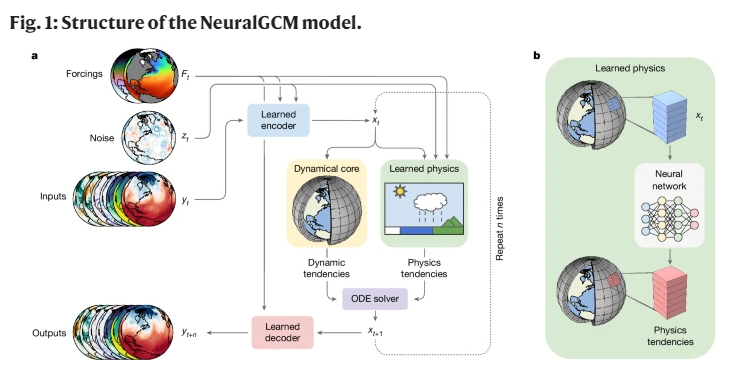Recently, Google has made a remarkable breakthrough in the field of weather forecasting. They have developed a new atmospheric circulation model called NeuralGCM, which boasts a computational efficiency that is 100,000 times higher than traditional physical models, equivalent to the progress made in high-performance computing over the past 25 years.

By combining machine learning with physical modeling, NeuralGCM performs both rapidly and accurately in simulating Earth's atmosphere. The results of this research have also been published in the prestigious international journal Nature, drawing significant attention.

Google's CEO announced this achievement on social media, highlighting that NeuralGCM will provide scientists with a new tool for predicting climate change. In the current context of rapidly rising global temperatures, this will help researchers understand the impact of climate change on different regions, such as areas likely to experience prolonged droughts or coastal regions facing flood risks.
Traditional weather forecasting models typically rely on physical laws, dividing the Earth into cubes with sides of 50 to 100 kilometers to calculate weather changes within these areas. However, this method, due to its large scale, often overlooks many important climatic processes. In contrast, NeuralGCM uses neural networks to learn the physical principles of small-scale weather events from existing data, significantly enhancing the accuracy of simulations.
By training on weather data from 1979 to 2019, NeuralGCM has demonstrated weather forecasting accuracy within 2 to 15 days that surpasses the current state-of-the-art physical models. In climate prediction, NeuralGCM also performs exceptionally well, especially in temperature forecasting, where its error is only one-third of that of traditional models.
Additionally, NeuralGCM is highly efficient in both speed and computational cost. Compared to traditional models, it is 3,500 times faster and costs 100,000 times less than X-SHiELD, running efficiently on ordinary computers.
The introduction of NeuralGCM marks a significant leap in the field of climate modeling, not only providing new possibilities for future weather forecasting but also offering stronger support for our research on climate change.
Paper link: https://t.co/zyXhW8deko
Key points:
🌍 NeuralGCM model's computational efficiency is 100,000 times higher than traditional physical models, capable of simulating 22 days of weather in just 30 seconds!
📈 In weather forecasts from 2 to 15 days, NeuralGCM's accuracy surpasses the current most advanced models.
💻 Its computational cost is 100,000 times lower than traditional models, running efficiently on ordinary computers.










